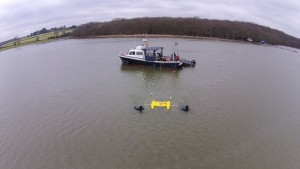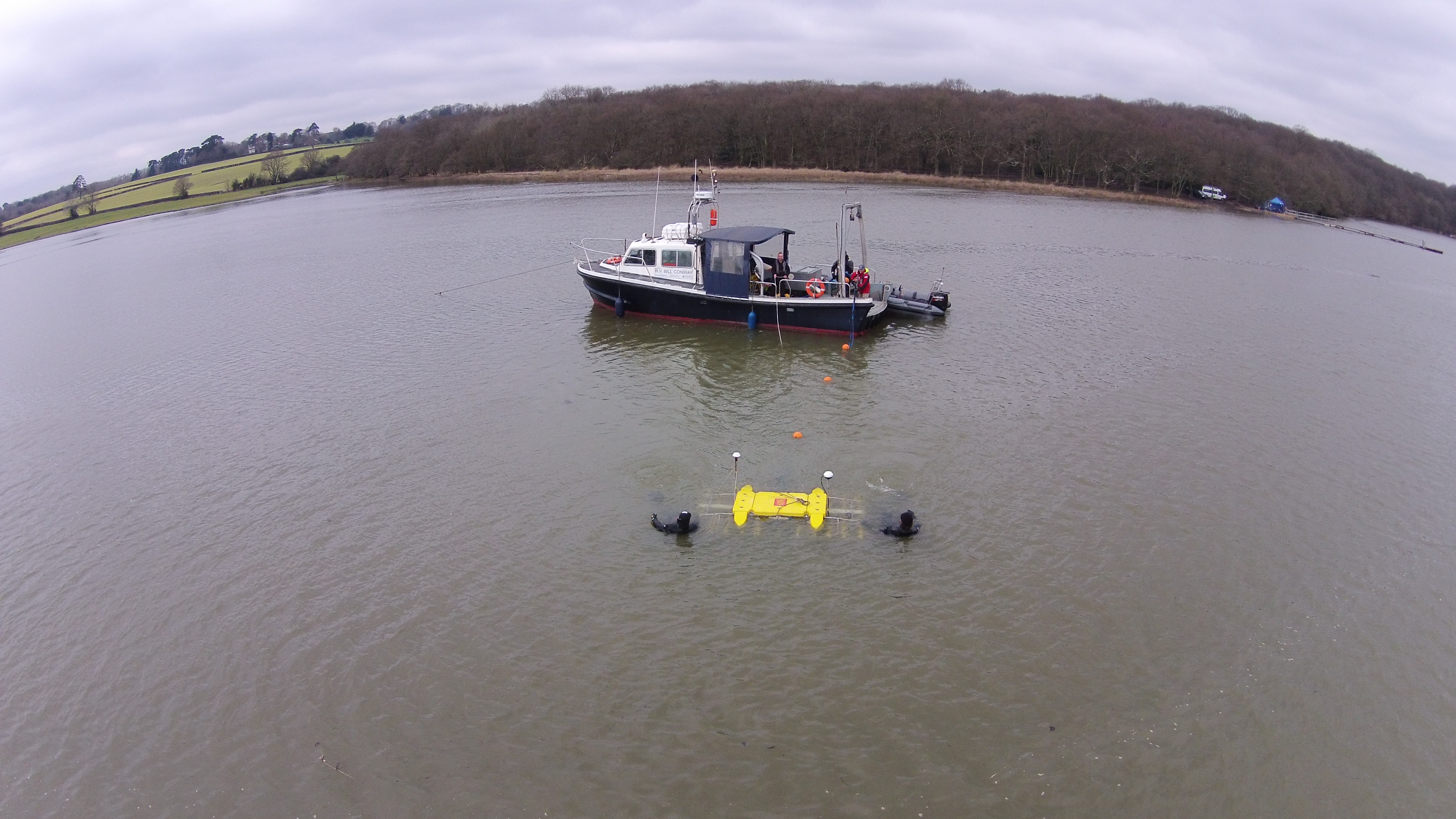Dr Justin Dix has been awarded a grant from Historic England for a research project to search the River Hamble in Hampshire for traces of a significant wreck. The site may be the resting place of the Holigost, a ship built in 1414 and used by Henry V to fight the French during the Hundred Years War.
The Associate Professor in Marine Geophysics will be using 3D Chirp technology, developed at the University of Southampton, to survey beneath the river bed and produce an accurate three dimensional image of what lies underneath the mud. In March 2016, postgraduate researchers will swim alongside the equipment in shallow water as it surveys the sub-surface and the results will be analysed by a team including Justin’s former PhD student Dr Angelika Zisi.
The project follows extensive archival research by independent historian Dr Ian Friel who believes an aerial photograph taken 30 years ago shows an outline of the buried ship in the area. If this three month investigation suggests there is potential for a targeted excavation, Historic England is likely to commission further research.
“There has been tremendous media interest in the fate of the Holigost as we mark the 600th anniversary of the Battle of Agincourt,” explains Justin. “Our pioneering imaging technology will help establish whether this important medieval warship could be lying beneath the mud of the River Hamble.”
The site at Bursledon is close to the protected wreck of the Grace Dieu, another of Henry V’s ships. It is now owned by the University of Southampton and a fieldwork site for University maritime archaeologists, led by Professor Jon Adams who are also working with Justin on this project.
http://www.bbc.co.uk/news/uk-england-berkshire-34503044

